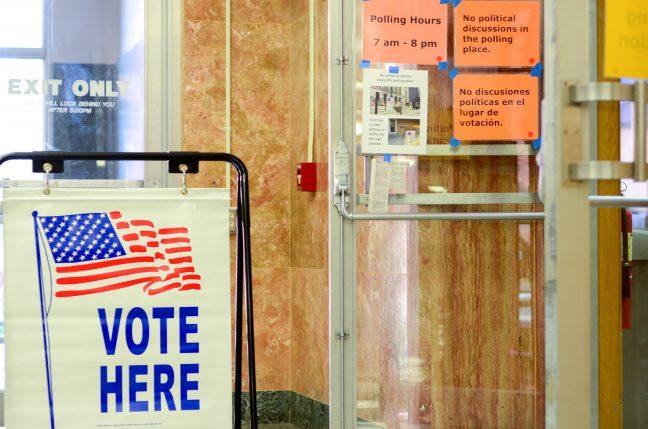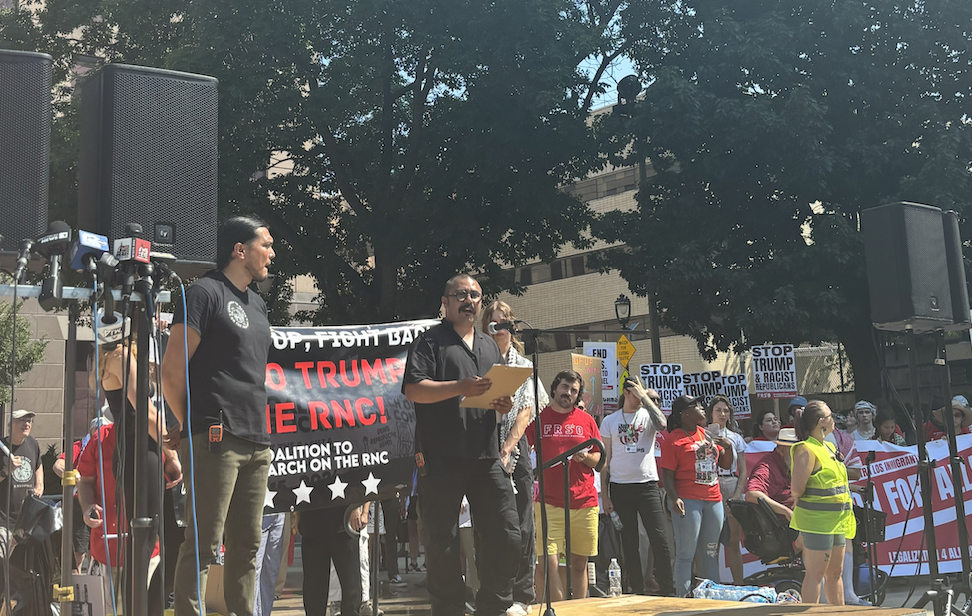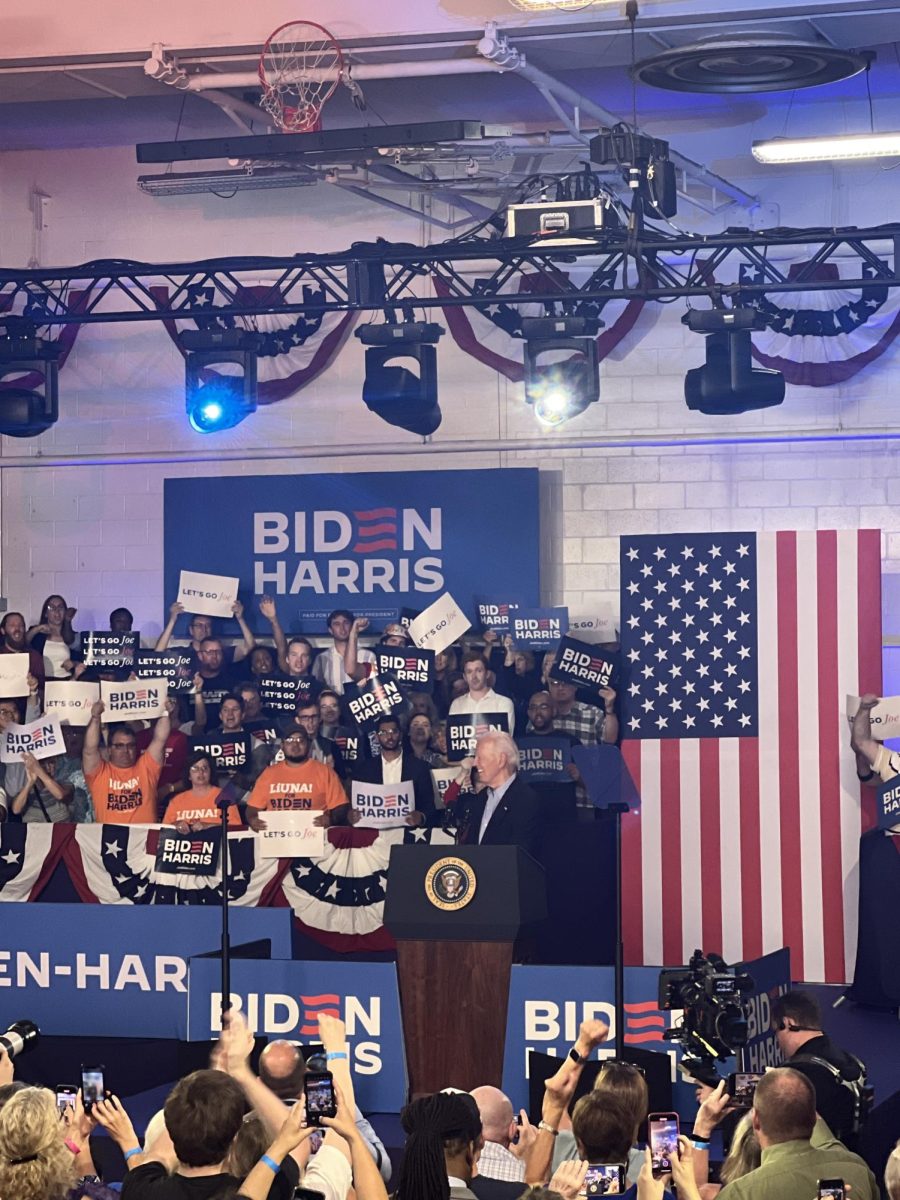Political experts say Wisconsin will be a key swing state in the 2020 presidential election, and different campus political organizations are rising to the challenge 2020 poses to student voters.
Wisconsin was a tipping-point swing state in 2016 that put Trump over the edge to victory, according to The New York Times. Wisconsin is once again under the microscope for the rapidly approaching 2020 election. Through examining Wisconsin’s unique political situation, political experts contended that Wisconsin will have the same electoral power in 2020.
University of Wisconsin political science professor David Canon said Wisconsin has been a vital swing state since the ‘80s. Canon said historically, many of the margins in state and presidential elections between Republicans and Democrats were even closer than the one that split the state in 2016, and that the same patterns will make Wisconsin a key indicator state in 2020.
“We’re just a very evenly split state and have been for decades, and so there are not many states in the situation,” Canon said. “That means we’re in that status of being a battleground state.”
While Democrats have historically managed to win by a small margin in most of Wisconsin’s toss-up presidential elections, Canon said that changed in 2016 with an unanticipated increase in voter turnout from rural counties. The Democratic urban vote did not come out as strong for Clinton as it did for Obama in previous elections, which also contributed to the state flipping red.
Canon said the “urban-rural split” is a huge factor in Wisconsin with strong Democratic strongholds in Milwaukee and Madison conflicting with many of the rural and suburban areas leaning Republican. Canon also noted the Fox River Valley area from Appleton to Green Bay serves as “the battleground within the battleground,” and makes the area one of the most heavily saturated media markets in the country around presidential elections.
UW School of Journalism and Mass Communications professor Michael Wagner said Wisconsin’s “contentious” political situation is connected to the state’s media ecology. Based on research with the Communication and Civic Renewal research group, Wagner said Wisconsin’s information diet greatly impacts how Wisconsinites engage with politics.
“There’s over 80 hours a day of conservative talk radio that air in our state,” Wagner said. “The social media network of conservatives is more local and it’s more locally driven by local politicians and local talk radio hosts, whereas the liberal network is more diffuse, it’s more national in its orientation.”
New findings claim Evers administration slow to respond to records requests
Wagner said this situation sets up the contentious environment revolving around alienation of opposing views through news sources and social groups Wisconsinites choose to converse with. Wagner added that studies of Wisconsin’s media diets also revealed that the voters who check out multiple news sources from different ideological viewpoints are more likely to split their tickets.
In the 2018 U.S. Senate and gubernatorial election, 12% of voters in Wisconsin split their tickets. Wagner said those split ticket voters are the ones who are most likely going to decide the election in 2020.
“It’s the ticket splitters that are really crucial in razor thin races like the one we might see in 2020,” Wagner said.
Additionally, the 2018 midterms showed a huge increase in youth voter turnout across the country, with voters from 18 to 29 making a significant impact. Both Wagner and Canon said this indicates a shift that could carry over into 2020. Wagner said the higher turnout shows stronger voting habits forming earlier, which could lead to a stronger political voice.
Recognizing the combination of a powerful Wisconsin and youth vote, many political student groups are jumping at the chance to register and persuade students to hit the polls in 2020. UW students Adam Fearing, chair of the College Democrats, Ryan Christens, chair of the College Republicans, and Molly Doerrer, president of the bipartisan group the Millennial Action Project, capture different perspectives on the importance of Wisconsin.
All three groups are looking to engage student voters with different goals in mind. Fearing said the College Democrats are working closely with the national party with a “real sense of urgency,” saying liberals and activists have to take Wisconsin seriously going into 2020. Christens said both political parties recognize the state’s importance, and he believes the margin will be “razor thin” in 2020, leading the College Republicans to begin mobilizing “earlier than ever before.”
Fearing said the College Democrats are “standing by the values of the Democratic party” and putting them out to students to reach potential voters. Christens said the College Republicans want to inform students on what “President Trump and conservatives stand for” to extend their message to the voters.
Doerrer of MAP said the number one thing she took away from the 2016 election was Wisconsin’s unique political makeup. She explained that, while Madison and Milwaukee have the power to win elections, the vastly different needs of rural and urban Wisconsin were heavily reflected by the 2016 election.
“The 2016 primaries were still pretty divided between Republicans and Democrats, but what was really interesting is that all the counties that voted for Bernie, most of them switched to Trump,” Doerrer said. “So to me, that demonstrates Wisconsin’s desire for an alternative politician to lead the country.”
Gov. Evers takes first step to create carbon-neutral Wisconsin
Doerrer said this desire could largely manifest in the youth vote with the younger generation having “different expectations of their politicians” that she believes will be the catalyst to push many young voters to the polls from both sides of the aisle. Doerrer said MAP’s goal will be to get students to invest into formulating and challenging their opinions going into 2020.
“Part of the reason we are so polarized is because we’re identifying as so polarized,” Doerrer said. “So MAP and bipartisan discussion, when your ideology doesn’t matter and it’s just your views and experiences as a person … that’s where the most growth takes place.


















